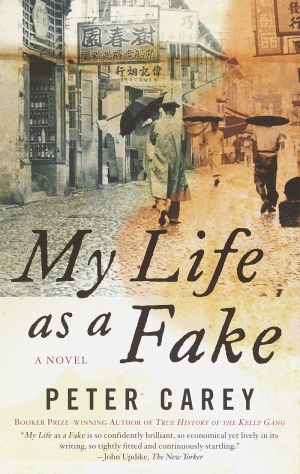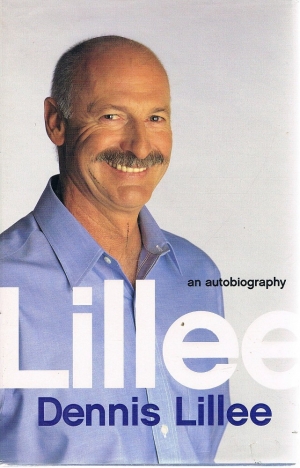Archive
Dianne Dempsey reviews 'Thicker than Water' by Lindy Cameron, 'The Castlemain Murders' by Kerry Greenwood and 'The Cutting' by Lee Tulloch
Miss Maude Silver, Miss Jane Marple, where are you, with your splendid and authoritative bosoms, your discreet inquiries, natural reticence, and cunning powers of deduction? Oh, a long way from these sisters in crime.
... (read more)Bowed from the supermarket, a week’s rations
jumbling the plastic, I saw in shadow
my dead father. He crept the pavement, burdened
as I am not by a lost country.
... (read more)Santamaria absolved
Dear Editor,
As one who was both active in the Labor Party at the time of The Split and also a Catholic, I agree with almost everything in Heather Nash’s review of The Pope’s Battalions (ABR, August 2003). But there are serious omissions.
The most important one is the reviewer’s neglect of a matter of history that is evident early in the book and that goes to the heart of the cause of The Split. This is the now proven fact that B.A. Santamaria aimed to control the ALP, secretly and from the outside, and to promote legislation through a Labor government in keeping with his own religious/political fantasies. Bemused, if not blinded, by his own enthusiasm and self-righteousness, Santamaria was confident that he would be able to do so. The Pope’s Battalions makes this clear, and provides firm evidence. This is not the first book to do so, but its early chapters also show how these less-than-realistic aims were the outcome of ideological theories of society that Santamaria absorbed from several different sources during his youth. They crystallised in his heart and mind, despite the impracticality of such dreams in the twentieth century, especially in Australia.
... (read more)To an outside observer of the Australian literary and cultural scene, the Ern Malley hoax is one of those spin-offs in the Australian experience that keep on conjuring up Mark Twain’s famous dictum of the nature of the country’s history: ‘It does not read like history, but like the most beautiful lies ...
... (read more)Stathis Gauntlett reviews ‘Summer Visit: Three novellas’ by Antigone Kefala and ‘The Island/L’île/To Nisi’ by Antigone Kefala
Readers who share Helen Nickas’s view that Antigone Kefala’s fiction forms ‘a continuous narrative which depicts and explores the various stages of an exilic journey’ may be pleased to find more instalments in her fourth book of fiction, Summer Visit. The first of the three novellas is an account of an unsatisfying marriage, told with a controlled detachment that makes its title, ‘Intimacy’, seem ironic. In contrast, the third, ‘Conversations with Mother’, contains a series of elegiac apostrophes of the deceased; the connections with Braila and other congruities with a figure familiar from previous writings again encourage an assumption of autobiography.
... (read more)Prue Torney-Parlicki reviews ‘Turning off the Television: Broadcasting’s uncertain future’ by Jock Given and ‘Media mania: Why our fear of modern media is misplaced’ by Hugh Mackay
At a recent Australian Broadcasting Authority conference, federal communications minister Senator Richard Alston conceded that the early adoption of digital television in Australia had been ‘modest’. More impartial observers of the transition to digital broadcasting in Australia have been less restrained. ‘A digital dead-end’ and ‘dismal failure’ are representative of recent media commentary on the subject.
... (read more)Art is a strange posing of discoveries, a display of what was no more possible. For it is the task of the creative artist to come up with ideas which are ours, but which we haven’t thought yet. In some cases, it is also the artist’s role to slice Australia open and show it bizarrely different, quite new in its antiquity.
Half a century ago, Sidney Nolan did just this with his desert paintings and those of drought animal carcasses. I recall seeing some of these at the Peter Bray Gallery in 1953 and being bewildered by their aridity: a cruel dryness which made the familiar Ned Kelly paintings seem quite pastoral. Nor could I get a grip on his Durack Range, which the NGV had bought three years earlier. Its lack of human signs affronted my responses.
The furthest our littoral imaginations had gone toward what used to be called the Dead Heart was then to be found in Russell Drysdale’s inland New South Wales, Hans Heysen’s Flinders Ranges, and Albert Namatjira’s delicately picturesque MacDonnells. Nolan’s own vision was vastly different: different and vast. It offered new meanings and posed big new questions.
... (read more)At the outset, I acknowledge the traditional custodians on whose ancestral land Queensland’s first university stands.
It is now approaching eight years since I retired from the Bench. In the time since then, I have effectively ceased to be a lawyer. Consequently, I do not feel qualified to offer any really worthwhile professional advice to those of you who are setting out on legal careers.
The most I can do is to urge you to be true to your own personal principles and to the ethical standards which are essential to the proper practice and administration of law in this country. That having been said, I venture to share a few thoughts with you about the nation, which will be increasingly reliant on the leadership of people like yourselves as it passes through its third half-century.
... (read more)Oh Dennis, Dennis! For four decades, we’ve had to forgive your indiscretions and blemishes. We’ve done so willingly, because you were not only the fast bowler of a generation, but of that generation’s milestones. For many Australians, their national cricket team of the Lillee, Chappell, Marsh era was as important a cultural statement as the Beatles to the English in the 1960s. The stovepipe creams, the body-shirts, the massive crops of hair and the noses thumbed at the old Establishment, English and local, either drove or represented significant change in Australia. Lillee, ultra-competitive and irreverent (he said gidday to the Queen and asked for her autograph), stood at the forefront of all this. So we forgave him for the aluminium bat, for betting on England, for kicking Javed Miandad, for pulling out of a tour of England to help establish World Series Cricket – for so many things. And here we are again in 2003, still having to forgive him.
... (read more)Oh Dennis, Dennis! For four decades, we’ve had to forgive your indiscretions and blemishes. We’ve done so willingly, because you were not only the fast bowler of a generation, but of that generation’s milestones. For many Australians, their national cricket team of the Lillee, Chappell, Marsh era was as important a cultural statement as the Beatles to the English in the 1960s. The stovepipe creams, the body-shirts, the massive crops of hair and the noses thumbed at the old Establishment, English and local, either drove or represented significant change in Australia. Lillee, ultra-competitive and irreverent (he said gidday to the Queen and asked for her autograph), stood at the forefront of all this. So we forgave him for the aluminium bat, for betting on England, for kicking Javed Miandad, for pulling out of a tour of England to help establish World Series Cricket – for so many things. And here we are again in 2003, still having to forgive him.
... (read more)





